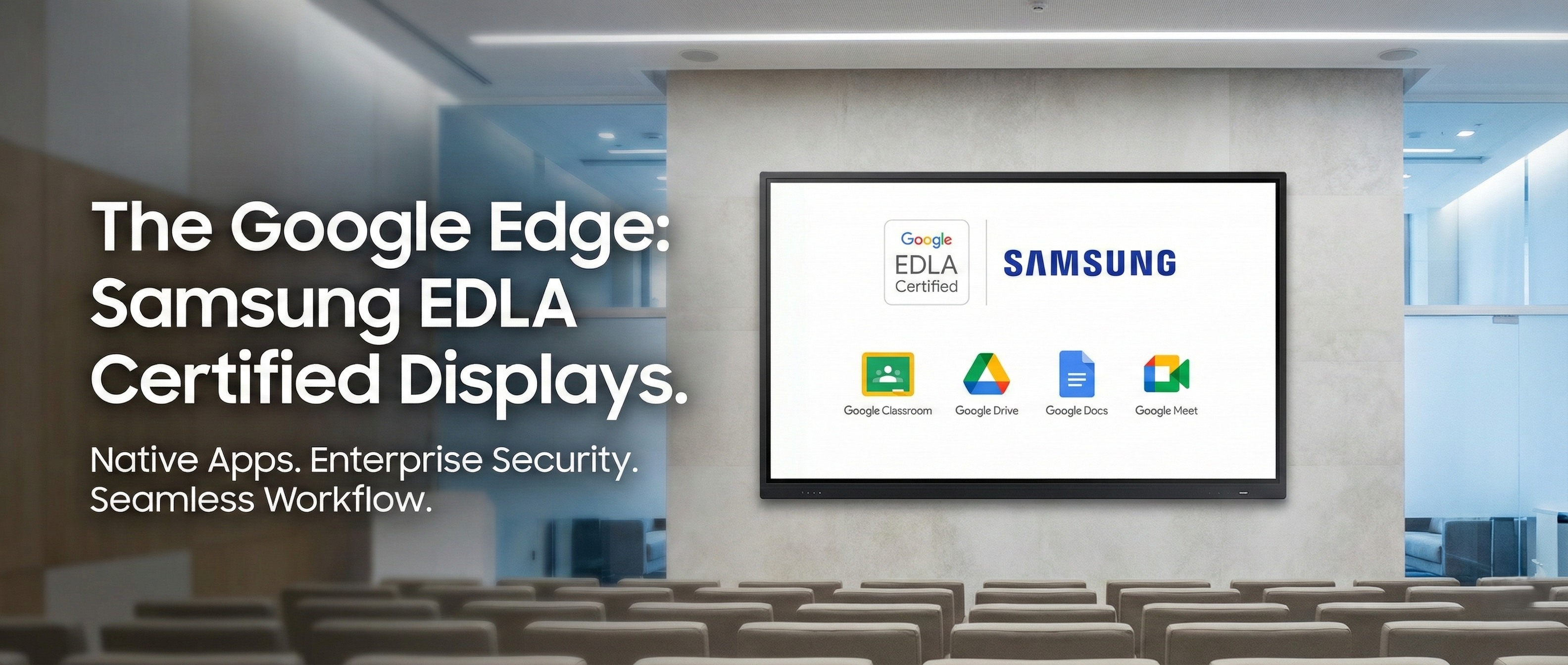Why a Digital Transformation Plan is Non-Negotiable for Every School
The world has changed. Our lives, our work, and our communication are all deeply intertwined with technology. Yet, for many schools, the classroom experience still looks remarkably similar to what it was decades ago. While some institutions have embraced technology piecemeal, true, lasting change requires a more intentional approach: a comprehensive digital transformation plan. This isn't just about buying new devices; it's about fundamentally rethinking how technology can enhance learning, streamline operations, and prepare students for a future where digital literacy is a core competency.
In today's fast-paced environment, a reactive approach to technology is a recipe for falling behind. The COVID-19 pandemic served as a stark wake-up call, forcing schools to pivot to remote learning almost overnight. But that was a crisis response, not a strategic overhaul. A well-thought-out digital transformation plan provides a clear roadmap, ensuring that every technological investment serves a purpose and aligns with a school's broader educational goals. It's the difference between merely using technology and truly leveraging its power to create a better, more effective learning environment for everyone.
This article will explore the most compelling reasons why a strategic school digital transformation plan is no longer a luxury, but a necessity. We'll examine how it improves student outcomes, empowers educators, and future-proofs the entire institution.
The Core Pillars of a School Digital Transformation
Before we delve into the "why," let's understand the "what." A school digital transformation plan is a multi-faceted strategy that touches every part of an institution. It's not just about one-to-one devices; it's a holistic approach that includes:
Instructional Transformation: How technology changes the way teachers teach and students learn.
Operational Transformation: How technology streamlines administrative tasks, from enrollment to parent communication.
Cultural Transformation: How technology reshapes the school's mindset and its approach to innovation.
This integrated approach is what truly unlocks the value of technology in education.
1. Enhancing Student Outcomes and Personalized Learning
The one-size-fits-all model of education is becoming obsolete. Students have diverse learning styles, paces, and needs. A digital transformation plan allows schools to cater to this diversity on an unprecedented scale.
Adaptive Learning: AI-powered platforms can analyze a student's performance in real-time and provide customized learning paths. If a student is struggling with a concept, the system can provide additional resources and practice problems. If a student is excelling, it can offer more challenging material. This ensures every student is engaged at their optimal level, leading to better academic outcomes.
Immersive Experiences: Technology like virtual reality (VR) and augmented reality (AR) can transport students beyond the classroom walls. Imagine a history class where students can walk through ancient Rome or a biology lesson where they can perform a virtual dissection. These hands-on, experiential learning opportunities make complex subjects tangible and memorable.
Development of 21st-Century Skills: A digital-first curriculum inherently teaches students skills they will need in the modern workforce, such as critical thinking, digital literacy, collaboration, and problem-solving. It moves learning beyond rote memorization and into practical application.
The data supports this shift. Research shows that personalized learning can significantly increase student achievement and engagement. A digital transformation plan is the framework that makes this possible.
2. Empowering and Supporting Educators
Teachers are the cornerstone of any great education system. A digital transformation plan doesn't replace them; it empowers them by automating administrative tasks and providing powerful new teaching tools.
Time-Saving Automation: Tasks like grading, attendance tracking, and data entry can be time-consuming. Digital systems can automate these processes, freeing up valuable time for teachers to focus on what matters most: interacting with students and designing engaging lessons.
Data-Driven Instruction: Learning analytics provide teachers with real-time insights into student progress. With this data, teachers can quickly identify who is struggling, pinpoint specific learning gaps, and intervene effectively. This data-backed approach allows for more targeted, impactful instruction.
Professional Development: A successful digital transformation plan includes robust and continuous professional development for teachers. Training sessions and ongoing support ensure that educators are not just comfortable with new technology, but are also skilled at integrating it into their pedagogy to maximize its educational impact.
A strong digital plan ensures that teachers feel supported and equipped to thrive in a modern classroom, reducing burnout and fostering a culture of innovation.
3. Streamlining School Operations and Communication
A school is a complex organization, and digital transformation can dramatically improve its operational efficiency, creating a more seamless experience for everyone—students, staff, and parents.
Improved Communication: A central, digital platform can serve as a hub for all communication. Parents can receive real-time updates on their child's progress, school announcements, and event information. This transparency builds trust and fosters a stronger school-home partnership.
Automated Administrative Tasks: From online enrollment and fee payments to digital record-keeping and scheduling, technology can automate repetitive administrative tasks. This reduces the risk of human error, saves money on paper and printing, and allows administrative staff to focus on more strategic initiatives.
Enhanced Cybersecurity: A key component of any digital transformation plan is a robust cybersecurity strategy. As schools handle more sensitive data (student records, financial information), protecting that data from cyber threats becomes paramount. A plan ensures that the necessary security measures are in place from the start.
By creating a more efficient and secure operational framework, a digital transformation plan allows the entire school to run more smoothly and effectively.
4. Creating an Inclusive and Accessible Learning Environment
Technology can be a powerful tool for promoting equity and inclusion in education. A strategic digital transformation plan ensures that all students, regardless of their background or learning challenges, have access to a quality education.
Accessibility Features: Digital tools and platforms often include built-in accessibility features such as text-to-speech, closed captions, and customizable display options. These tools can be invaluable for students with learning disabilities, visual impairments, or other special needs.
Bridging the Digital Divide: A comprehensive plan addresses the issue of the digital divide by ensuring that all students have access to the necessary devices and internet connectivity, whether at school or at home.
Flexible Learning Models: Digital transformation supports the shift to blended and hybrid learning models, which offer flexibility for students who may have unique circumstances or who thrive in a mix of in-person and online learning environments.
An intentional digital plan ensures that technology is used to break down barriers, not create new ones.
5. Future-Proofing the School's Infrastructure and Reputation
In an increasingly competitive landscape, a school's technological capabilities can be a major differentiator. A proactive digital transformation plan ensures that a school stays relevant and attractive to prospective students and staff.
Attracting and Retaining Talent: Top-tier educators are drawn to institutions that provide them with the tools and support they need to be effective. A school that has a clear vision for technology is a more appealing place to work.
Enhanced Reputation: A school known for its innovative use of technology and its commitment to preparing students for the future will have a stronger reputation in the community.
Scalability and Adaptability: A well-structured plan ensures that the school’s technological infrastructure is scalable and can adapt to future changes in education technology without requiring a complete overhaul every few years. This saves money and resources in the long run.
A digital transformation plan is an investment in a school’s long-term sustainability and success.
FAQs about School Digital Transformation
Q1: What is a school digital transformation plan?
A: A school digital transformation plan is a strategic roadmap for integrating technology into all aspects of an educational institution—from classroom instruction and student learning to administrative operations and school culture. It's a long-term strategy designed to align technology with the school's educational mission, ensuring that digital investments are purposeful and effective.
Q2: What are the key challenges of digital transformation in education?
A: The main challenges include high initial investment costs, the digital divide (unequal access to technology and internet), the need for comprehensive teacher training, and resistance to change from staff, students, or parents. A well-designed plan addresses these challenges proactively through phased implementation, funding strategies, and ongoing professional development.
Q3: How long does a digital transformation plan take to implement?
A: A complete digital transformation is a continuous process, not a one-time project. While initial phases can take 1-2 years to implement, the full transformation is an ongoing journey that requires continuous monitoring, evaluation, and adaptation to new technologies and educational best practices.
Q4: Is a digital transformation plan only for private or well-funded schools?
A: Absolutely not. While private schools may have more resources, a digital transformation plan is arguably more critical for public and underfunded schools. A strategic plan helps these institutions maximize limited resources by prioritizing technology that offers the greatest return on investment and addresses the most pressing needs of their students and community.
Q5: How do we measure the success of our digital transformation plan?
A: Success should be measured against the specific goals outlined in the plan. Key performance indicators (KPIs) can include improved student test scores, higher student and teacher engagement rates, increased efficiency in administrative tasks, positive feedback from parents, and the percentage of teachers who have completed professional development on new technologies.
Conclusion: The Time for Action is Now
The future of education is digital, and every school has a choice: to be a leader in this transformation or to be left behind. A school digital transformation plan is the essential blueprint for success, providing a clear vision, a strategic roadmap, and a framework for measuring progress. It’s about leveraging technology to create more engaging, personalized, and effective learning environments that prepare students not just for exams, but for life.
Don't wait for the next crisis to force change. The time to plan is now. By embracing this strategic shift, schools can unlock incredible opportunities to improve student outcomes, empower educators, and build a resilient, future-ready institution.
Ready to start your school's transformation journey? Explore our comprehensive guide on How to Choose the Right EdTech for Your Classroom to take the first step toward a brighter, more innovative future.





